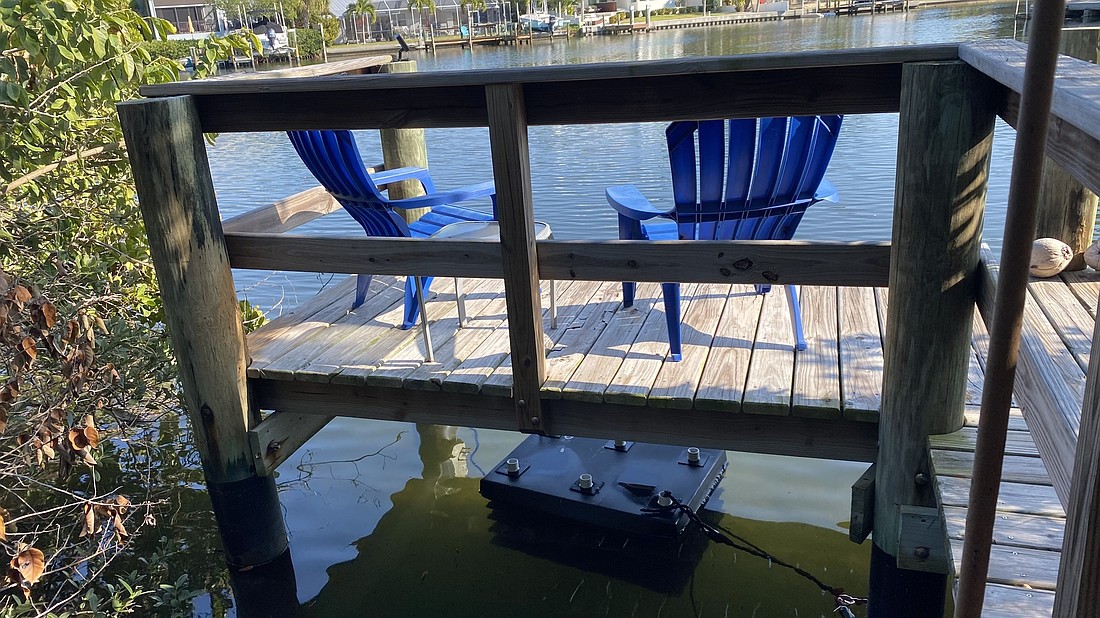- November 19, 2025
-
-
Loading

After securing their latest county grant of $9,000 in October, Siesta Key residents have installed 180 mini-reefs in the waters surrounding the island. The next step in the mini-reef project will focus on science, data and measurements.
The mini-reefs, designed to provide housing primarily for juvenile fish, have helped reverse the effects infrastructure has had on the water’s ecosystem. Jean Cannon, a leader in the mini-reef project, said the mini-reefs have already shown effectiveness.
“We’ve already seen an uptick in the fish population,” Cannon said. “We’ve had more manatees because of the mangroves there for them to eat. We’ve even seen some 22-inch tarpon in the canal.”
Cannon said the first step was acknowledging visible progress. Now, with the help of seven volunteers, the project’s next step will focus on the science and precise data behind the progress.
Measurements have typically been done using kayaks, but Cannon said finding volunteers with larger boats would make measuring more efficient. In addition to transportation, she said the tools required are costly.
“We have been borrowing some of the measuring tools from Venice and Anna Maria. I think it’s important that we have our own,” Cannon said. “These digital tools will cost around $7,000.”
A team from Anna Maria has scheduled a trip to Siesta Key on Jan. 27 to train residents how to use their digital measuring tools. Once the measuring process has been determined, practiced and perfected, mini-reef volunteers will be able to analyze what is needed to maintain steady progress.
The three areas have not worked separately, though. Venice, Siesta Key and Anna Maria’s environmental advocates have formed the Blue Water Coalition, where data, training and equipment can be shared to improve each areas’ project.
“The three of us are doing the exact same thing, collecting the exact same data,” Cannon said. “We’re working together, comparing results and training each other. We may be pulling in Pelican Cove too if they’d like some assistance.”
Water salinity, oxygen content and pH are a few of the measurements being analyzed. Not only are the measurements useful in attracting oysters and additional ocean life to the mini-reefs, but could also assists in the broader goal of a cleaner, more free-flowing waterway.
Cannon said the Siesta Key canal flows with the tide one way in and one way out, which has caused sediment to become stagnant and muddy the water. But if mini-reefs attract oysters and worms, the problem could naturally be solved.
“Oysters are like little super-cleaners,” Cannon said. “They pick up all this stuff in their shells, rework it and spit it out. Then that becomes food for baby fish and it really gets the whole ecosystem going.”
If all goes according to plan, increasing the oyster population will be the primary focus in 2023, after data, volunteers and equipment are strengthened this year. Already partnered with several students at Eckerd College (St. Petersburg) and Out-the-Door Academy, Cannon said the effort has continued to grow.
In addition to assisting Siesta Key’s waterways, Cannon said the experience will be shared to the county and the rest of the state.
“I believe it’s the University of Florida that has a water atlas and that’s something we want to contribute to,” Cannon said. “This isn’t just for Siesta Key, it’s for the whole county and the state.”
“Hopefully if we continue to evolve our processes, more and more communities will do this,” Cannon continued. “All communities can do this, it just takes a little concentration.”